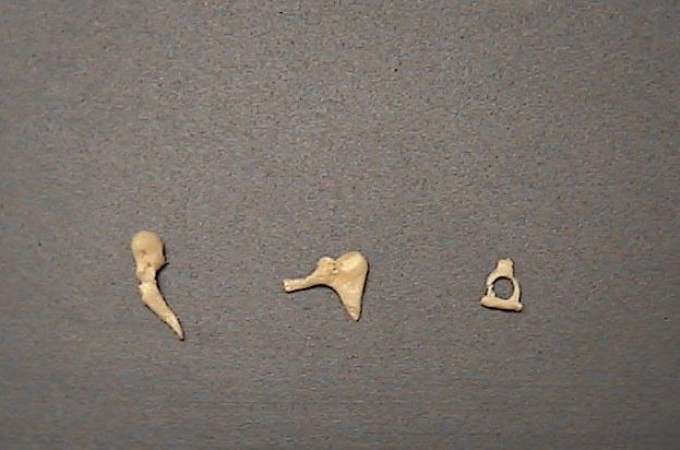
The human body is a remarkable marvel of nature, with intricate structures and functions that never cease to amaze us. Among its countless wonders, the ear stands out as an organ responsible for the magical sense of hearing. Within this extraordinary auditory apparatus lies the smallest bone in the human body, the stapes bone. In this article, we will delve into the world of the stapes bone, exploring its anatomy, significance, medical implications, and the advancements in auditory medicine.
The Human Ear: Structure and Function
Before we unravel the mysteries of the stapes bone, let's understand the basics of the human ear. The ear is divided into three main parts: the outer ear, the middle ear, and the inner ear. The outer ear collects sound waves and channels them into the ear canal. The middle ear, where the stapes bone is located, plays a crucial role in transmitting sound to the inner ear. Finally, the inner ear converts these sound waves into electrical impulses, allowing us to perceive sound.
The Stapes Bone: Anatomy and Location
The stapes bone, also known as the stirrup bone, is one of the three tiny bones in the middle ear, collectively called the ossicles. These bones, including the malleus (hammer), incus (anvil), and stapes, work in harmony to amplify and transmit sound vibrations from the eardrum to the inner ear. The stapes bone is situated between the incus and the oval window of the inner ear.
The Significance of the Stapes Bone
Despite its small size, the stapes bone plays a vital role in the auditory process. When sound waves enter the ear canal and strike the eardrum, the vibrations are transferred to the ossicles. The stapes bone leverages its mechanical advantage to amplify these vibrations and efficiently transmit them to the inner ear fluid. This ability to amplify sound is crucial for our ability to hear faint sounds and distinguish various frequencies.
Factors Affecting the Size of the Stapes Bone
The size of the stapes bone can vary among individuals, and several factors contribute to this variability. Genetics, ethnicity, and age are some of the primary factors influencing the dimensions of the stapes bone. Research suggests that there might be a correlation between the size of the stapes bone and a person's hearing capabilities.
Medical Conditions and the Stapes Bone
Several medical conditions can impact the stapes bone and cause hearing impairments. One such condition is Otosclerosis, wherein abnormal bone growth around the stapes bone hinders its movement, leading to conductive hearing loss. Timely medical intervention and surgical procedures can often restore hearing in these cases.
Understanding Hearing Loss
Hearing loss is a common concern, affecting millions of people worldwide. It can be categorized as conductive, sensorineural, or mixed, depending on the affected part of the auditory system. While conductive hearing loss involves issues with the middle or outer ear, sensorineural hearing loss results from problems in the inner ear or the auditory nerve.
Surgical Interventions Involving the Stapes Bone
In cases of conductive hearing loss caused by stapes bone issues, surgical interventions can be highly effective. One such procedure is stapedotomy, wherein the surgeon creates a small hole in the stapes footplate and places a prosthesis to restore its movement. This surgery has transformed the lives of many individuals with Otosclerosis.
Modern Advancements in Auditory Medicine
The field of auditory medicine has witnessed incredible advancements in recent years. From sophisticated hearing aids to cochlear implants, technology has opened new doors for individuals with hearing impairments. These innovations offer a chance for a better quality of life, allowing people to reconnect with the world of sounds.
Protecting Your Ears and Hearing
Prevention is always better than cure, and the same applies to hearing health. Protecting our ears from loud noises and harmful environmental factors can significantly reduce the risk of hearing loss. Using earplugs in noisy environments, keeping music volumes at a reasonable level, and taking regular breaks from high-volume sounds are essential practices to preserve our hearing.
The Importance of Regular Check-ups
Routine check-ups with an audiologist are crucial, especially as we age. Hearing tests can detect early signs of hearing loss, enabling timely interventions and preventing further deterioration. Being proactive about our hearing health empowers us to make informed decisions about potential treatments or lifestyle adjustments.
Hearing Aids: A Boon for Hearing Impaired Individuals
For individuals with hearing loss, hearing aids have proved to be a boon. These tiny electronic devices amplify sound and improve hearing ability, helping individuals lead fulfilling lives. With advancements in technology, modern hearing aids are discreet, comfortable, and equipped with intelligent features to adapt to various listening environments.
In conclusion, the stapes bone, with its miniature size yet significant role, is a testament to the wonders of human anatomy. As part of the middle ear's ossicles, it contributes to our ability to hear and appreciate the world of sound. While medical conditions may challenge its functionality, modern medicine and technology offer hope and solutions for those facing hearing impairments. Let us cherish the gift of hearing and take proactive steps to protect and care for our auditory health.
Humans Share About 50% of Their DNA With Bananas
High-Tech Health Gadgets: Monitoring and Managing Your Well-being
"Indian Cuisine: A Melting Pot of Diverse Traditions and Modern Trends"